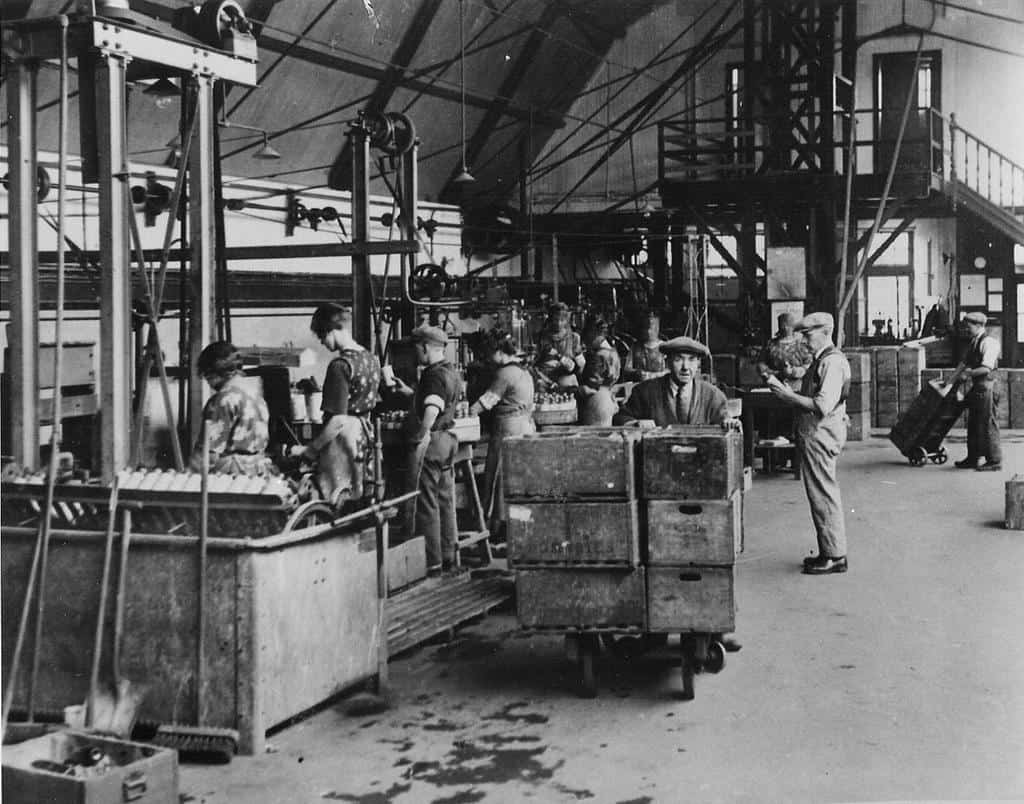2020 is the Year of Scotland’s Coasts and Water. The new foyer display revealed this week at Dumfries Museum explores the cure or kill properties of our water supplies and the changing fashions in consumption through time.
Councillor Andy Ferguson, Chair of Communities Committee, said;
“We don’t often think about where our drinking water comes from or how lucky we are to have a safe supply. Before clean water was piped to homes, the residents of Dumfries relied on springs, wells and river water – sometimes with disastrous consequences.”
Dumfries has had a number of artesian wells where the underground water flows under natural pressure. These were exploited by businesses from the 1800s onwards as the popularity of bottled mineral water, drunk for health reasons, and later flavoured carbonated water (fizzy drinks) became popular.
By 1860 carbonated water (sometimes called aerated water) had become easier to manufacture and flavoured syrups such as lemon or ginger were often added. It had lost its medicinal associations and was being sold by grocers and wine and spirit merchants as well as chemists. Manufacturers in Dumfries included Robert Carruthers’ Aerated Water Factory at Newall Terrace and Johnstone & Hill Co., Aerated Water Manufacturers, Old brewery, Buccleuch Street.
The Armstrong and Dickie aerated water works was designed by the Dumfries architect Wilfrid Fitzalan Crombie between 1903 and 1905 and built on the site of an artesian well at Dockhead on the Whitesands. The company was so proud of the new building that they used it on the labels of some of their bottles. In the late 20th century the building was converted for use as a retail outlet selling tiles.
.
Storing these new drinks without losing their fizz posed a challenge and led to new designs of glass bottles and stoppers. Each company had their own glass bottles, many of which were reusable. Bottles from local manufacturers are part of the display at the museum.
As well as supplying essential drinking water springs and wells were often associated with healing. Rituals and beliefs built up around them.
Councillor John Martin, Vice-Chair of Communities Committee, said;
“The town once had a thriving industry in bottled mineral water and flavoured drinks based on clean water from artesian wells. These drinks were sold in reusable glass bottles – maybe a business model that will be revisited.”
St Queran’s well near Dumfries is named after a Scottish saint who lived during the 800s. It was believed that drinking the water would cure diseases, particularly of women and children. Offerings were left at the well including coins and pieces of cloth. Wells like this are often called clootie wells – a piece of cloth is dipped in the water of the well and then tied to a branch while a prayer is said to the spirit of the well.
Brow Well on the Solway coast is a spring containing the mineral chalybeate which was believed to have healing properties. Townspeople of Dumfries went there to drink the water and for sea bathing, which was also believed to improve health. As his health continued to deteriorate, the poet Robert Burns drank the foul tasting water from the iron cup attached to the well and waded chest deep into the cold tidal waters but died within days of this experience on 21 July 1796.
The Bottling It exhibition also touches on a dark part of the history when infected drinking water was responsible for the spread of cholera in Dumfries which killed 550 people in 1832 and 450 people in 1848.
The exhibition opened on Tuesday 28 January and runs until January 2021. Dumfries Museum is open 10am to 1pm and 2pm to 5pm Tuesday to Saturday and admission is Free.
Exhibition open to the public from 28 January 2020

